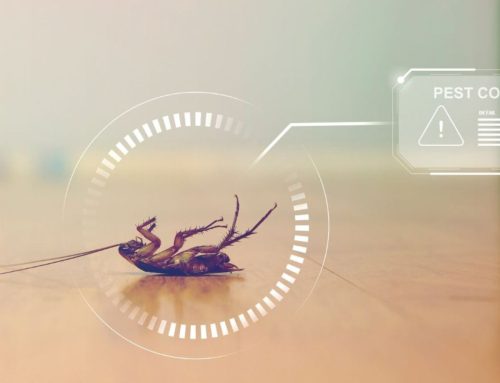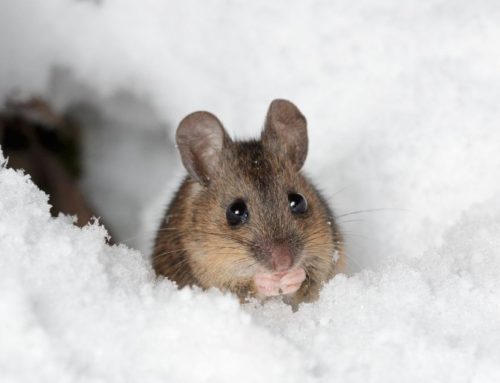Winterizing your home against pests is crucial when cold weather starts creeping in, as all sorts of pests begin searching for warmth. Your home becomes a tempting target. Getting your home ready for winter involves more than just insulation; pest management is essential as well.
Having a solid fall prevention checklist can make a real difference. You will keep unwanted pests out before the chill sets in and avoid the headache of a full-blown infestation.
Just a few smart steps in the fall, like sealing entry points, removing attractants, and sticking to regular home care, can help ensure your home stays pest-free all winter long. Honestly, a little effort now saves a lot of stress later.
Winterizing Your Home Against Pests: A Complete Fall Prevention Checklist
Essential Steps to Pest-Proof Your Home in Fall
Winterizing your home against pests should always start with the basics. They love cracks, gaps, and cozy hiding places. If you want to keep your home pest-free, you’ll need to block entry points and reduce shelter options. It’s really the heart of pest prevention.
Inspect and Seal Entry Points
Start with thorough inspections of your home. Walk the exterior and hunt for cracks, gaps, and holes around windows and doors, pipes, and vents. Even tiny openings can let rodents or insects in.
Use expanding foam, steel wool, or silicone-based sealants to close up those cracks and gaps. Focus on spots where utilities and wires sneak inside, and don’t ignore the foundation and roofline.
Make these inspections of your home a habit every fall. It’s way easier to fix things now than to battle a full-blown infestation later.
Install and Maintain Door Sweeps
If you haven’t already, install door sweeps on all exterior doors. These create a barrier that stops mice and bugs from squeezing underneath. It’s surprisingly effective.
Rubber or silicone door sweeps create a tight seal that prevents cold drafts and stops pests from entering. It is important to check and replace these sweeps if they become worn or loose after heavy use or storms.
Make sure the sweep fits flush with the floor. Don’t forget garage doors and basement entries. It’s a simple upgrade that can block one of the most common entry points.
Apply Caulking and Weather Stripping
Grab some weather stripping and caulk if you spot gaps around windows and doors. Caulking fills cracks, while weather stripping seals up the frames to block drafts and pests alike.
Look for peeling or missing caulk and swap it out with something weather-resistant. Stick foam or rubber weather stripping where you notice air leaks. You’ll keep your home warmer and bugs out.
Reduce Moisture and Eliminate Clutter
Winterizing your home against pests isn’t complete without reducing moisture and eliminating clutter. Pests need water and shelter. If you fix leaks in plumbing, gutters, and downspouts, you’ll cut down on standing water that attracts insects.
Keep gutters and downspouts clear. Clogged ones create all sorts of problems, not just water damage, but also a haven for pests. In damp basements and crawl spaces, use dehumidifiers to lower humidity.
Clear out leaf piles, wood stacks, and debris near your home. These are prime real estate for rodents and insects prepping for winter. A tidy yard and foundation area go a long way for pest prevention.
Winterizing your home against pests also means paying attention to routine maintenance between seasons. Don’t wait for signs of pest activity. Prevention and early intervention are key to a stress-free winter.
Comprehensive Fall Home Maintenance Checklist
Want to prepare your home for fall and winter? Focus on the basics: check for damage, make sure water flows away from the house, and beef up insulation. These steps help keep your place cozy and pest-free when it’s cold outside.
Check the Roof for Missing Shingles or Damage
The roof takes a beating during fall and winter. Scan for missing or broken shingles, especially near chimneys and flashing. Cracked or loose shingles let water and pests sneak inside.
Clear away leaves and debris; moisture buildup is a magnet for unwanted pests. If you spot damage, fix it before winter makes things worse.
Maintain Gutters and Downspouts
Gutters and downspouts keep water away from your foundation. In the fall, leaves and dirt clog them up fast, which can cause water to back up and damage your home.
Clean gutters thoroughly and check that downspouts send water at least three feet from the house. Installing gutter guards can help if you’re tired of constant clogs.
Good drainage not only prevents water problems, but it also helps keep your home pest-free. Pests love damp, cluttered spots.
Upgrade Windows and Doors for Insulation
Windows and doors are classic entry points for both cold air and pests. Inspect seals, weather stripping, and caulking for any gaps or cracks. If you spot worn-out weather stripping, replace it.
Consider storm windows or insulated doors to trap heat and keep unwanted pests out. These upgrades can save money on heating and make your home more comfortable all winter long.
Safeguarding Your Interior: Safety and Comfort Measures
Inside your home, it’s all about safety and comfort as temperatures drop. Double-check detectors and protect pipes from freezing. These steps help you avoid fire, carbon monoxide, and water damage headaches in the middle of winter.
Test and Replace Smoke Detectors
Test your smoke detectors every month. Simply push the button and wait for the beep. If it’s weak or silent, swap out the batteries right away.
Replace old detectors every ten years. Place them in bedrooms, hallways, and on every level. Dust the vents gently and never disable one, even temporarily. A working detector is a real lifesaver.
Update Carbon Monoxide Detectors
If you use gas, oil, or wood heating, make sure you’ve got carbon monoxide detectors near sleeping areas. Test them monthly and replace batteries twice a year.
These detectors wear out after about 5–7 years, so don’t forget to replace the whole unit. If the alarm goes off, get out and call for help. Don’t take chances with carbon monoxide.
Prevent Frozen Pipes and Water Damage
Frozen pipes can burst and wreck your home. Insulate pipes in basements, crawl spaces, and attics with foam sleeves or tape. Keep indoor temps above 55°F, even in empty rooms.
Open cabinet doors under sinks to let warm air circulate. Before winter, drain outdoor hoses and shut off their valves. Let a trickle of water run from vulnerable pipes during cold snaps to keep things moving.
Frequently Asked Questions
Winterizing your home against pests protects your investment, but requires attention to detail every fall.
What are the key steps to take in the fall for effectively sealing my home against pests?
Inspect and seal cracks, gaps, and holes around windows and doors, the foundation, and anywhere utilities enter. Install door sweeps, fix damaged screens, and clear away debris and food sources near your home. Blocking those entry points before a full-blown infestation starts is essential.
Which types of pests pose the greatest risk to homes during the winter months?
Rodents like mice and rats top the list; they want warmth and food. Silverfish, spiders, and other insects also hide out indoors when it’s cold. If you don’t want them as roommates, take pest prevention seriously.
How can I identify potential entry points for pests in my home?
Look for cracks, gaps, and holes in the foundation, around pipes, and near vents. Windows and doors without good weather stripping are common entry points. Don’t skip inspecting attics, basements, and crawl spaces. Pests love those spots.
Are there any natural solutions for deterring pests during the winterization process?
Peppermint oil, vinegar, and diatomaceous earth around entry points can help repel rodents and bugs. Keeping your home dry and well-ventilated also makes it less attractive to unwanted pests.
What are the most crucial areas of the home to inspect and secure against infestations?
Focus on the foundation, attic, basements, and crawl spaces. Don’t ignore door and window frames, vents, and spots where utilities come in. Sheds and garages can be trouble areas, too. Give them a quick check to be sure.
How often should I conduct a thorough pest-proofing inspection of my home?
Honestly, you should prepare your home by doing a full inspection right at the start of fall. That’s when most fall pest problems start looking for entry points, especially around windows and doors.
Take another look in late fall, just before that cold weather truly settles in. Inspections of your home during these times help you spot cracks, gaps, missing weather stripping, or trouble with gutters and downspouts.
This way, you can handle pest prevention before a full-blown infestation hits. It’s a simple step to ensure your home stays pest-free all winter long.
Hire a Professional – ABC Termite & Pest Control Company – Omaha & Lincoln
If you’re concerned about pest infestations or want a professional to evaluate your home’s pest prevention strategies, don’t hesitate to reach out to a local Nebraska pest control expert.
Find a reputable pest control company in Omaha or Lincoln that you TRUST. Ask about their termite inspection and pest management services. You may think you are saving money; however, a single misapplication could have significant and adverse or deadly consequences for you or your loved ones. Contact ABC Termite & Pest Control in Omaha & Lincoln, NE to talk with an exterminator today!






